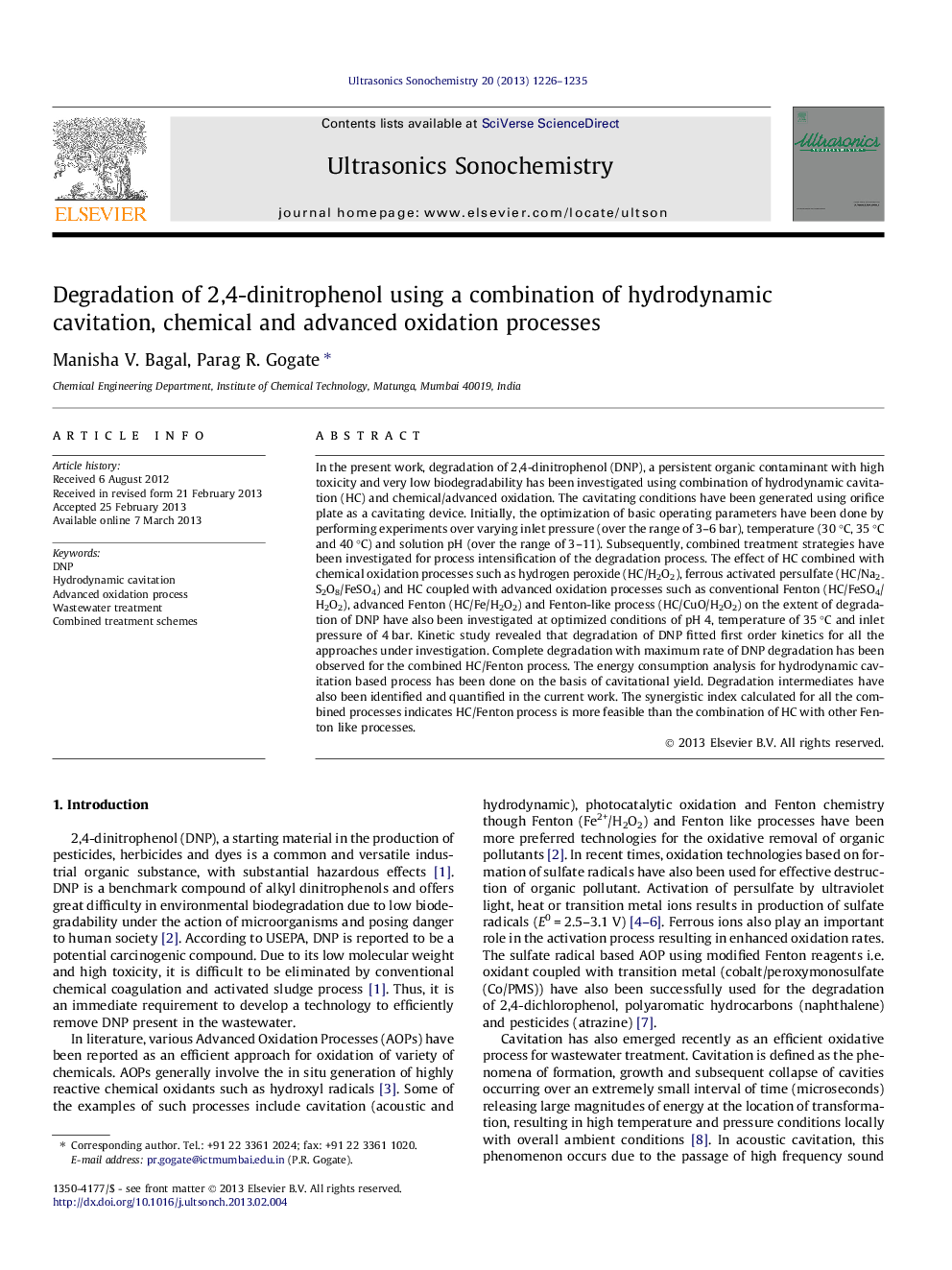| Article ID | Journal | Published Year | Pages | File Type |
|---|---|---|---|---|
| 1269962 | Ultrasonics Sonochemistry | 2013 | 10 Pages |
•Combined treatment strategies based on hydrodynamic cavitation are effective for DNP removal.•Combination of hydrodynamic cavitation with activated persulfate process.•Complete degradation of DNP is obtained using combined HC/Fenton process.•Homogeneous Fenton process is better as compared to Fenton like processes.
In the present work, degradation of 2,4-dinitrophenol (DNP), a persistent organic contaminant with high toxicity and very low biodegradability has been investigated using combination of hydrodynamic cavitation (HC) and chemical/advanced oxidation. The cavitating conditions have been generated using orifice plate as a cavitating device. Initially, the optimization of basic operating parameters have been done by performing experiments over varying inlet pressure (over the range of 3–6 bar), temperature (30 °C, 35 °C and 40 °C) and solution pH (over the range of 3–11). Subsequently, combined treatment strategies have been investigated for process intensification of the degradation process. The effect of HC combined with chemical oxidation processes such as hydrogen peroxide (HC/H2O2), ferrous activated persulfate (HC/Na2S2O8/FeSO4) and HC coupled with advanced oxidation processes such as conventional Fenton (HC/FeSO4/H2O2), advanced Fenton (HC/Fe/H2O2) and Fenton-like process (HC/CuO/H2O2) on the extent of degradation of DNP have also been investigated at optimized conditions of pH 4, temperature of 35 °C and inlet pressure of 4 bar. Kinetic study revealed that degradation of DNP fitted first order kinetics for all the approaches under investigation. Complete degradation with maximum rate of DNP degradation has been observed for the combined HC/Fenton process. The energy consumption analysis for hydrodynamic cavitation based process has been done on the basis of cavitational yield. Degradation intermediates have also been identified and quantified in the current work. The synergistic index calculated for all the combined processes indicates HC/Fenton process is more feasible than the combination of HC with other Fenton like processes.
